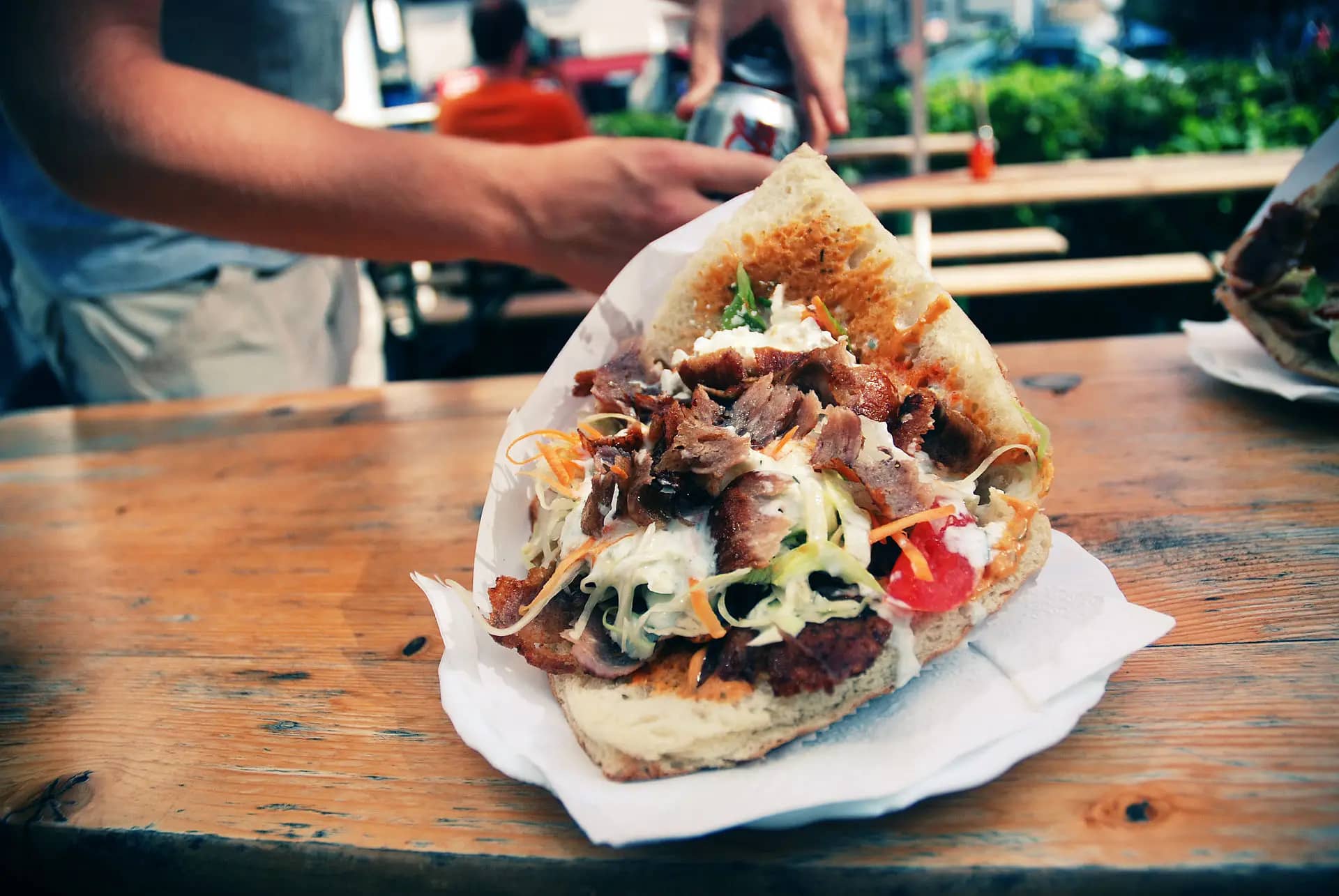The Greek word mŷthos, means “utterance, speech, discourse, tale, narrative, fiction, legend,” and is itself “of obscure origin”, the dictionary tells us. As is the myth concealing the German detective trail leading to the ur-kebab, kebab ground-zero or patient zero of the grill-wrangling trade.
“The legends about the father and inventor of the döner kebab have been spun in Germany for decades. The Association of Turkish Döner Kebab Manufacturers in Europe (ATDID) claims with all the authority of its weighty name that Kadir Nurman sold the first kebab in Germany at the Zoo train station in 1972. On March 27, 2010, Kadir Nurman told the Berliner BZ: “It all started opposite the Zoo train station in a 17 square meter snack bar, a part of today’s McDonald’s.”
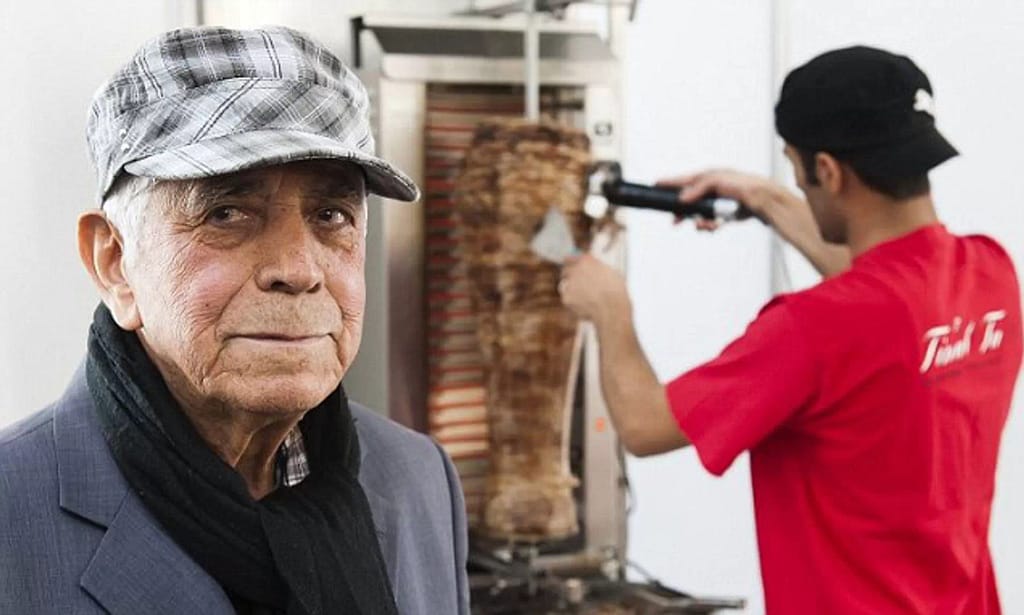
“Seit Jahrzehnten wurden die Legenden über den Vater und Erfinder des Döner Kebaps in Deutschland weitergesponnen. So behauptet der Verein Türkischer Dönerhersteller in Europa (ATDID) mit der ganzen Autorität seines gewichtigen Namens, Kadir Nurman habe 1972 am Bahnhof Zoo den ersten Döner in Deutschland verkauft. Am 27. März 2010 erzählte Kadir Nurman gegenüber der Berliner BZ: »Alles begann gegenüber vom Bahnhof Zoo in einem 17 Quadratmeter großen Imbiss, einem Teilbereich des heutigen McDonald’s.” © Seidel, Eberhard. “Döner: A Turkish-German cultural history” (German Edition) (p. 56). MARCH Publishers.
The German economic boom period of the 1950s — the Wirtschaftswunder — rapidly led to labour shortages, which were further exacerbated by a dramatic drop in the pool of East German workers available, after the Berlin Wall went up in 1961 and during the 1960s, West Germany had therefore started to attract thousands, then tens of thousands, of Turkish guest workers (Gastarbeiter) following in the well-worn footsteps stamped out by earlier waves of incomers from Italy, Spain and Greece. In a “nothing new under the sun” episode and despite this shortage, the government, in particular apparently, Theodor Blank, the Minister of Labour and Social Affairs, was initially more than a little reluctant to take workers from Turkey, objecting that the “culture gap” was too large. No parallels there with today, eh? It took the usual US pressure — they were eager to bring Turkey into the Western fold rather than have them run the risk of aligning with the Reds in Moscow — to “convince” the West German government to sign a bilateral agreement with Turkey on October 30th 1961.
Soon Turkish citizens were to become the largest group of guest workers in West Germany; in the 60+ years since the agreement was signed, a total of around 876,000 Turks have arraived in Germany. The subsequent move of the German economy into more hi-tech areas — reducing the need for unskilled labour — however meant alternative forms of employment were needed for the incomers, leading many of them to move into that age-old immigrant fall-back of cooking and thereby in the process, gifting Germany one of its most recognisable icons of cultural integration: ta-daaaaa – The Döner.
So what about the putative “King of the Kebab”?
Kadir is not the only person to have claimed (or to have this claim embellished and polished on his behalf) to have invented the Döner Kebab. Nor the only Turkish-German immigrant to have done so. Nor even the only one in Germany, come to that.
Nurman arrived in Stuttgart, Germany in 1960 before — at the age of 32 — moving to West Berlin, in 1966. Six years later he setup his “17 square meter snack bar” (called Imbiss) at the Zoologischer Garten station, astutely anticipating that the influx of mainly immigrant working class people into the area would mean an interest in buying what he later styled a “kebab-to-go”. At the time the Kebab was presented as grilled skewered meat — sometimes accompanied with rice — but, crucially, served on a plate. What Nurman claims to done was to offer it as a “takeaway” item, in a form that his customers could easily carry off with them to eat on the go or at home.
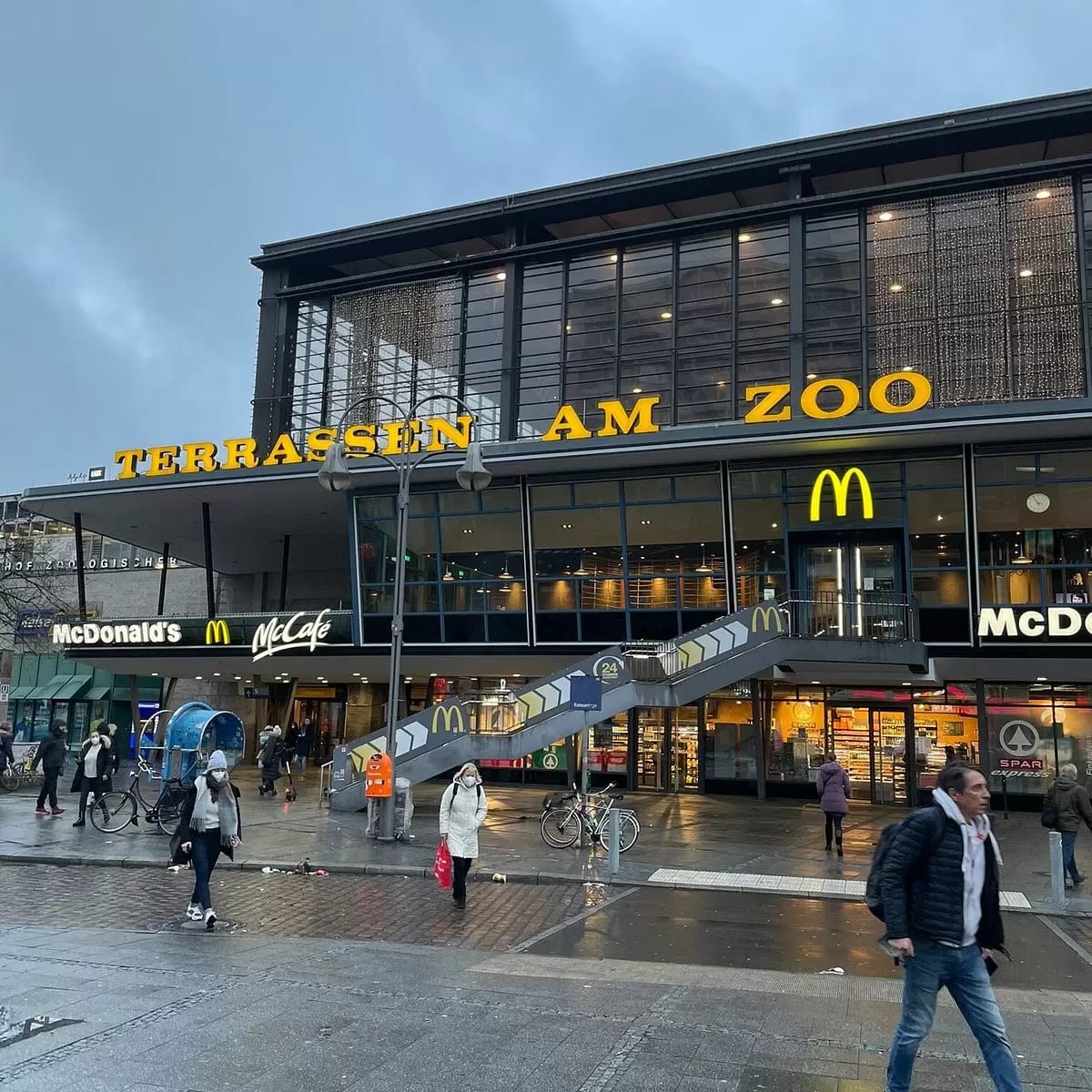
His Imbiss shop is long gone and whilst he didn’t get around to patenting this creation (apparently, a quite convoluted process in Germany, where it’s not as easy as simply just trademarking a name), none the less his legend however lives on. As do the questions of the veracity of his claim. Kadir was quoted as saying: “maybe someone else also did it, in some hidden corner, but no one noticed. The kebab became well-known through me” and his case for being seen as THE inventor becomes even more tenuous when found to have further admitted, way back in 1972, that his version consisted of bread, meat “and a little greenery”. Not the canonically accepted form of the Berlin Döner, as seen today…
Two other Turkish immigrants of the same vintage, have also thrown their hats into the ring.
The first, Mehmet Aygün, did well and now owns eight restaurants in the Hasir group across the city as well as the lux Titanic hotel chain, prominent in both Turkey and Germany.
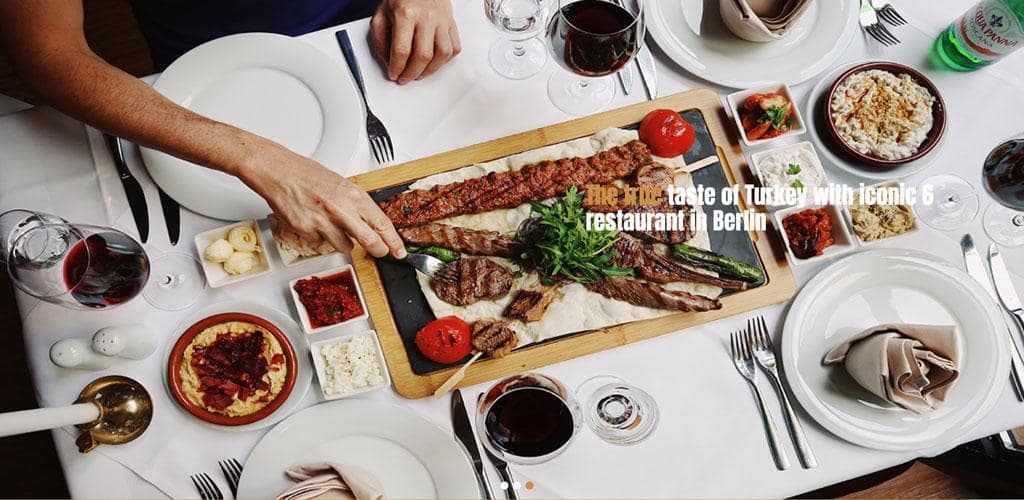
He’d started working at his parents Turkish restaurant aged 16, which is where he claims to have introduced the Döner Kebab in its current popular form, in March 1971. All well and good, you might think, except that in other press accounts he’s reported to have only started working there — to support his studies — in 1974 meaning that his claim is more than a little suss.
The third claimant to the crown, another Turkish Gastarbeiter, one Nevzat Salim, whilst working alongside his son, opened a snack stand in the south-west German city of Reutlingen, near Stuttgart, all the way back in 1969, where he too claims to have introduced the Döner Kebab. If true, that would predate Nurman at Zoo Station by three years. If true…
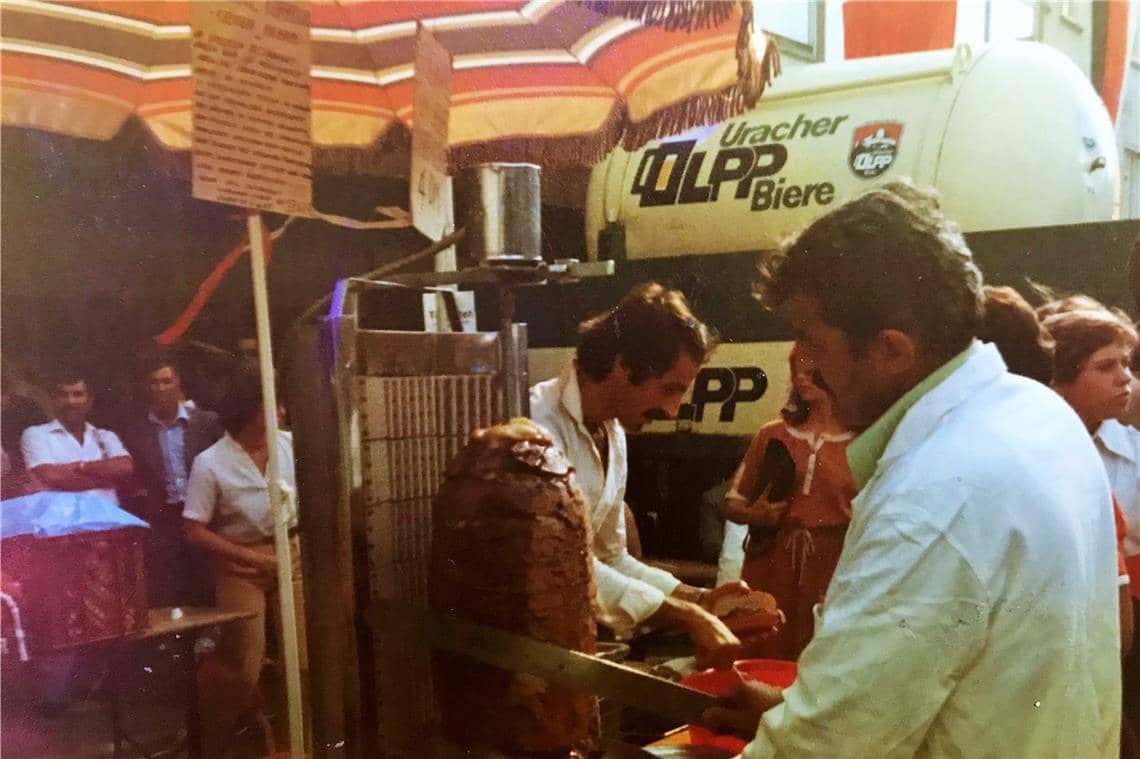
Yet, only the marketers really care people, only the marketers.
I think it’s clear to everyone, that the concept, the original execution of the Berlin Döner Kebab itself did not originate in that city; from Greek Gyros via Middle Eastern Shawarmas to the Mexican tacos al pastor, there are a multitude of variations on a theme that could be classed as falling into the rough category of ‘Kebab’. All are cooked on a vertical rotisserie and served in a sandwich form. All with their own equally problematic questions of inception & ancestry.
Although the provenance of the Berlin Döner Kebab may be in question; its acceptable form is not. And perhaps this is where we are getting somewhere – the difference is preparation and presentation.
The Berlin version balances four essential ingredients: meat, sauce, vegetables, and oil. It should consist of thinly sliced meat (veal or beef) cut from a vertical rotating grill, served in a lightly toasted triangular-shaped bread alongside diced lettuce, cabbage, onion, chopped tomato and cucumber along with an array of sauces (garlic, chilli, and herb). And, of course, variations exist throughout the city, some where its delivery mechanism is a pita bread (like a greek gyros), others come wrapped in a lavash or yufka flatbread called a Dürüm Döner. There’s no certainty. There never is.
So, rather than struggle to tie down the origin story of the Döner Kebab or to try to find the author of this Promethean gift, perhaps it’s better simply to think of this as merely evolution in action? It’s a döner. Nothing more, nothing less. And that’s the story.
